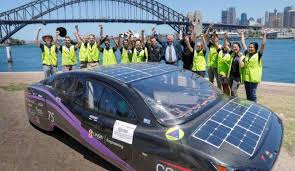
Breaking News
 LIVE ELECTION RESULTS: New York mayor, NJ & VA governor, Prop 50, Trump endorsements, latest vote
LIVE ELECTION RESULTS: New York mayor, NJ & VA governor, Prop 50, Trump endorsements, latest vote
 Sen. Markwayne Mullin Reveals Schumer Held Secret BACKROOM MEETING...
Sen. Markwayne Mullin Reveals Schumer Held Secret BACKROOM MEETING...
 RIP NYC - Muslim Communist Zohran Mamdani Wins New York City Mayoral Race
RIP NYC - Muslim Communist Zohran Mamdani Wins New York City Mayoral Race
 Dramatic Footage Shows UPS Cargo Jet Crashing At Louisville Airport
Dramatic Footage Shows UPS Cargo Jet Crashing At Louisville Airport
Top Tech News
 Japan just injected artificial blood into a human. No blood type needed. No refrigeration.
Japan just injected artificial blood into a human. No blood type needed. No refrigeration.
 The 6 Best LLM Tools To Run Models Locally
The 6 Best LLM Tools To Run Models Locally
 Testing My First Sodium-Ion Solar Battery
Testing My First Sodium-Ion Solar Battery
 A man once paralyzed from the waist down now stands on his own, not with machines or wires,...
A man once paralyzed from the waist down now stands on his own, not with machines or wires,...
 Review: Thumb-sized thermal camera turns your phone into a smart tool
Review: Thumb-sized thermal camera turns your phone into a smart tool
 Army To Bring Nuclear Microreactors To Its Bases By 2028
Army To Bring Nuclear Microreactors To Its Bases By 2028
 Nissan Says It's On Track For Solid-State Batteries That Double EV Range By 2028
Nissan Says It's On Track For Solid-State Batteries That Double EV Range By 2028
 Carbon based computers that run on iron
Carbon based computers that run on iron
 Russia flies strategic cruise missile propelled by a nuclear engine
Russia flies strategic cruise missile propelled by a nuclear engine
 100% Free AC & Heat from SOLAR! Airspool Mini Split AC from Santan Solar | Unboxing & Install
100% Free AC & Heat from SOLAR! Airspool Mini Split AC from Santan Solar | Unboxing & Install
Student-Designed Electric Car Breaks World Record by Crossing Australia in 6 Days...

A team of 14 college students have just set a Guinness world record with a solar-powered car that drove across Australia in 6 days using only $50 worth of energy.
The car, which has affectionally been named Violet, broke the record for using the lowest amount of energy on a cross-country drive earlier this month after it traveled roughly 2,500 miles (4,100 kilometers) from Perth to Sydney – and it arrived at its destination two days ahead of schedule.
The car was designed by the student-led Sunswift team at the University of New South Wales.
"I'm so excited we made it," said 20-year-old Courtney Morris, a mechanical engineering student involved with the project. "It's always so nerve-wracking to see the car that you built with your own hands on the road; I'm always afraid that something could change at any moment, but it all went pretty well and the team dynamic was great."
To set the record, the team had to keep the car's energy consumption to under 5.5 kilowatt hours (kWh) for every 62 miles. Actual energy consumption throughout the journey was an average of 3.25kWh per 62 miles, which is about 17 times less than an average Australian car.
By traveling an average of 372 miles (600 kilometers) a day, Violet used about the same energy per day as that of a standard household. When the vehicle is coasting at just 37 miles per hour (60kph), it uses about the same amount of energy as a four slice toaster.
"These students have pushed the boundaries of modern engineering and proven that solar powered cars are likely to be a big part of Australia's motoring future," said UNSW Dean of Engineering Professor Mark Hoffman, who was waiting for the students at the finish line.



